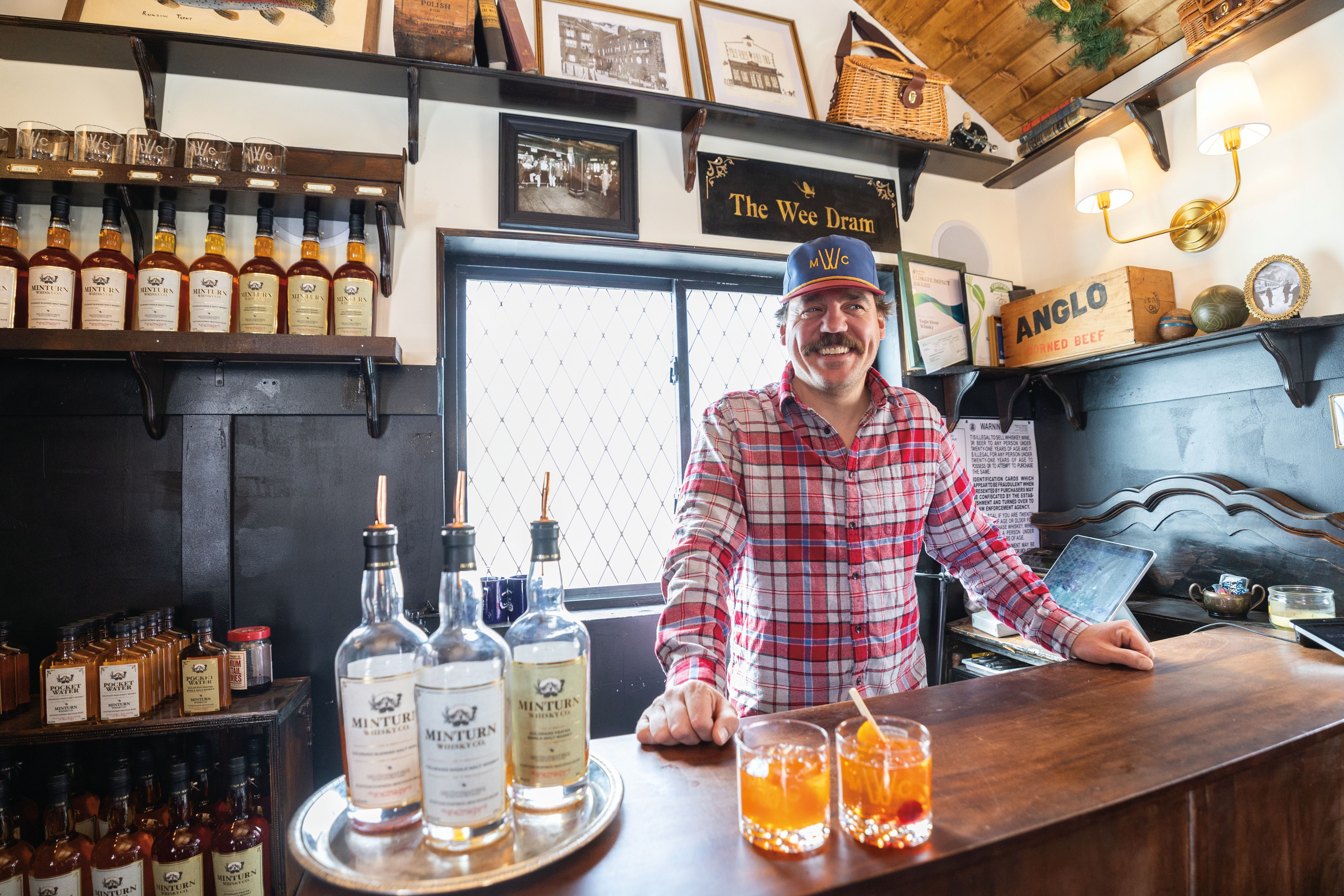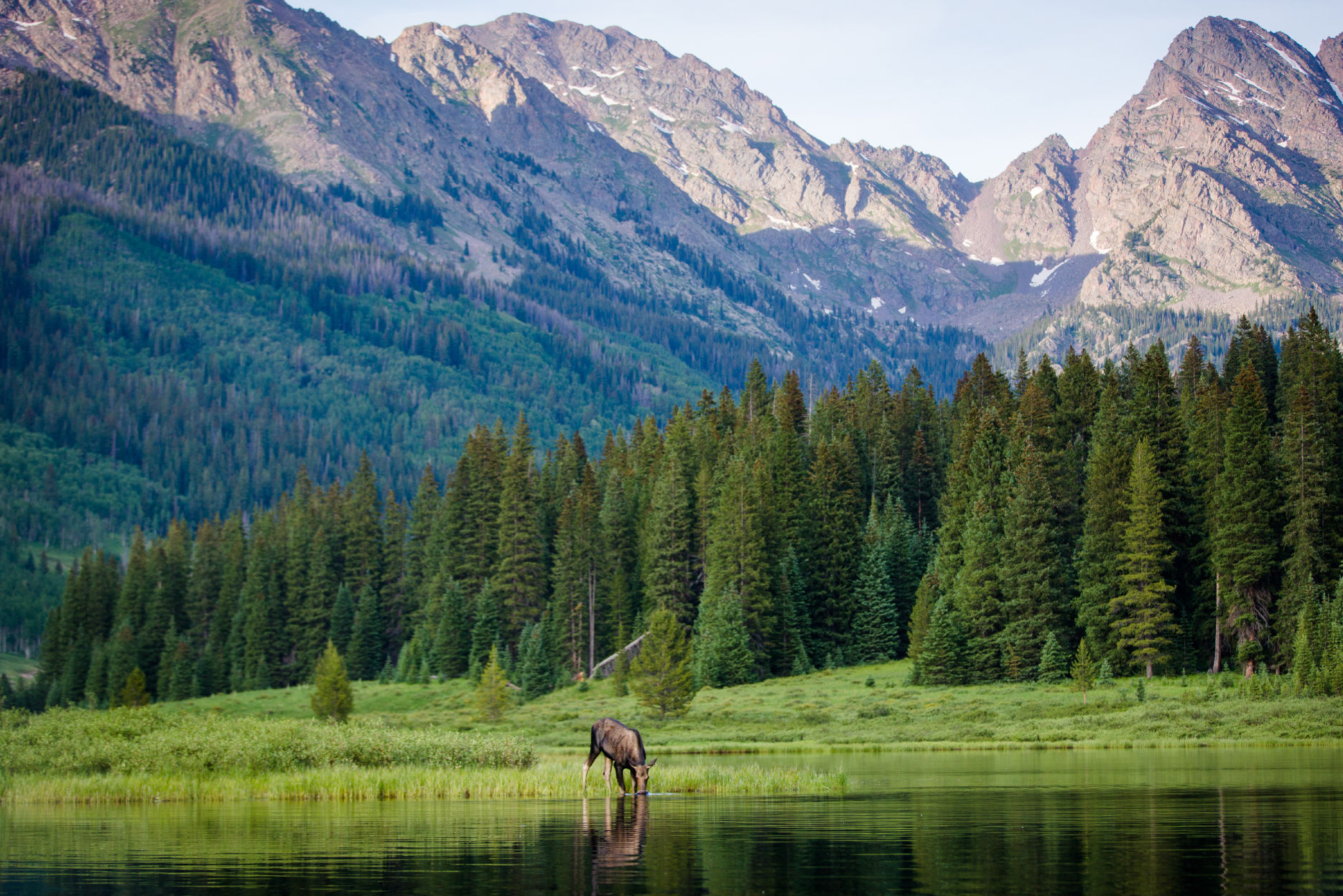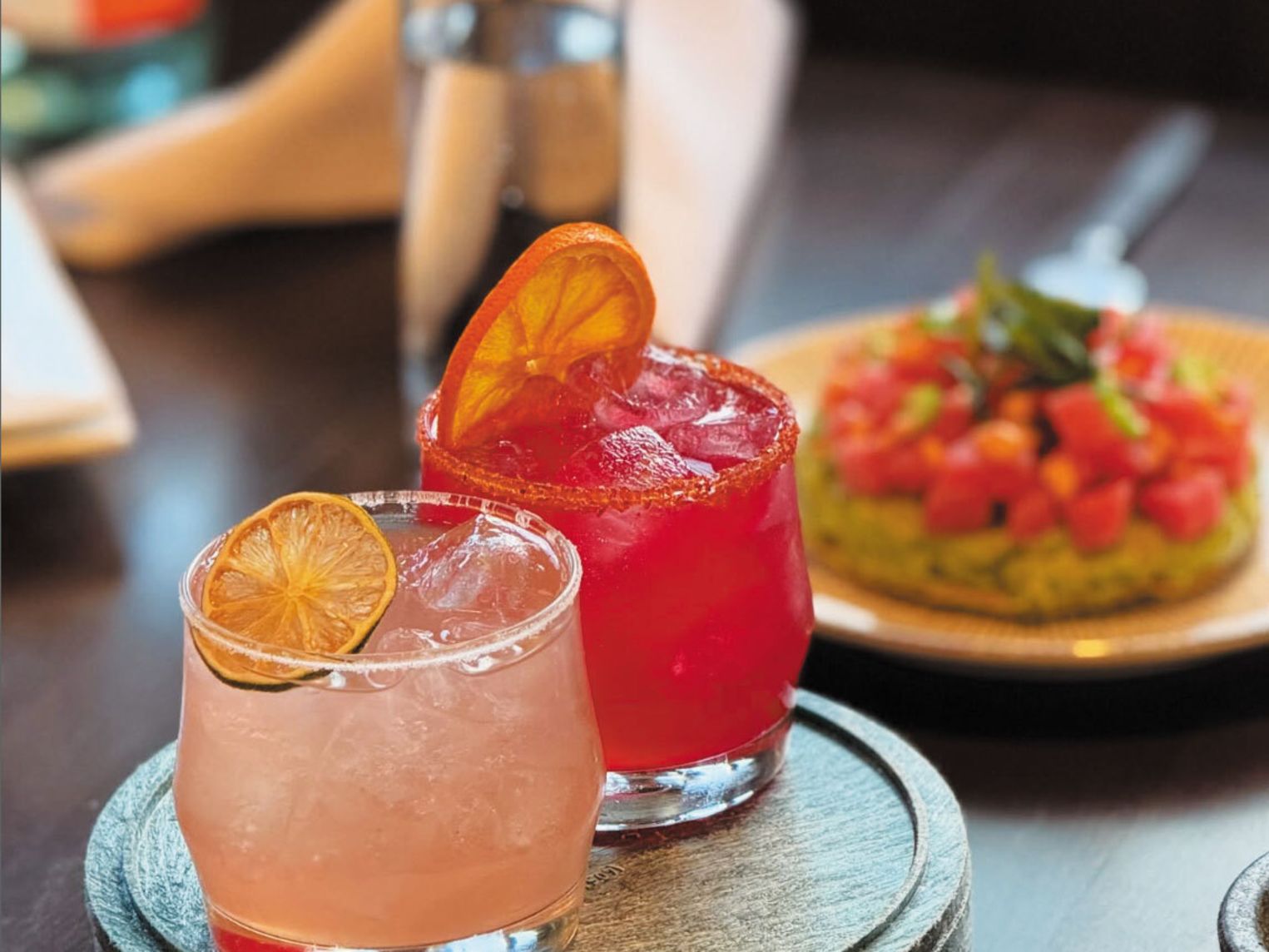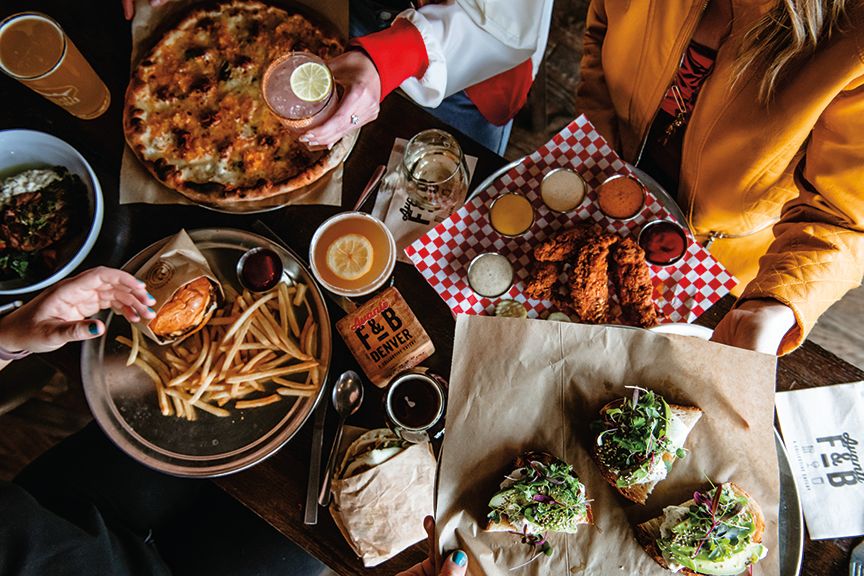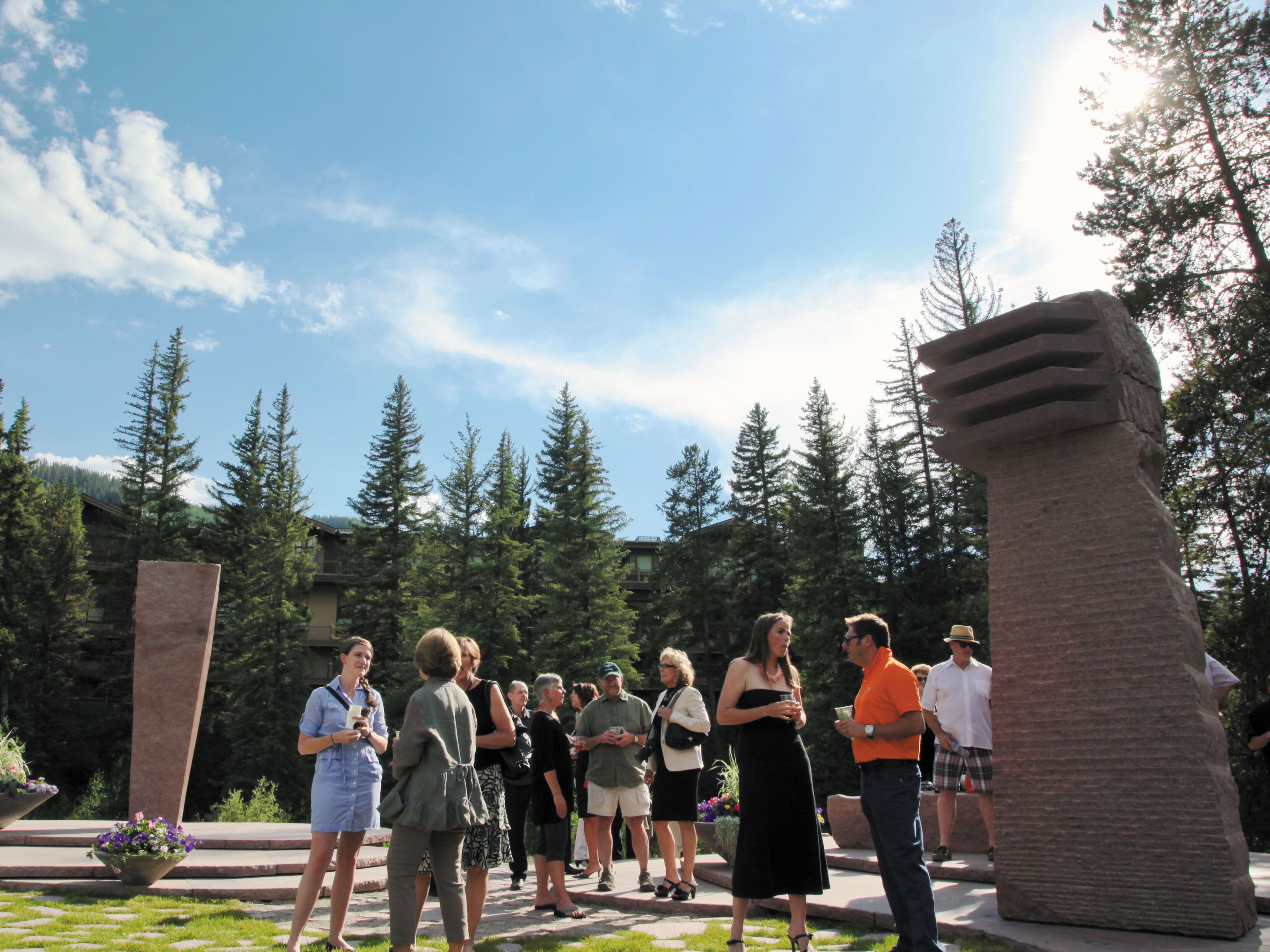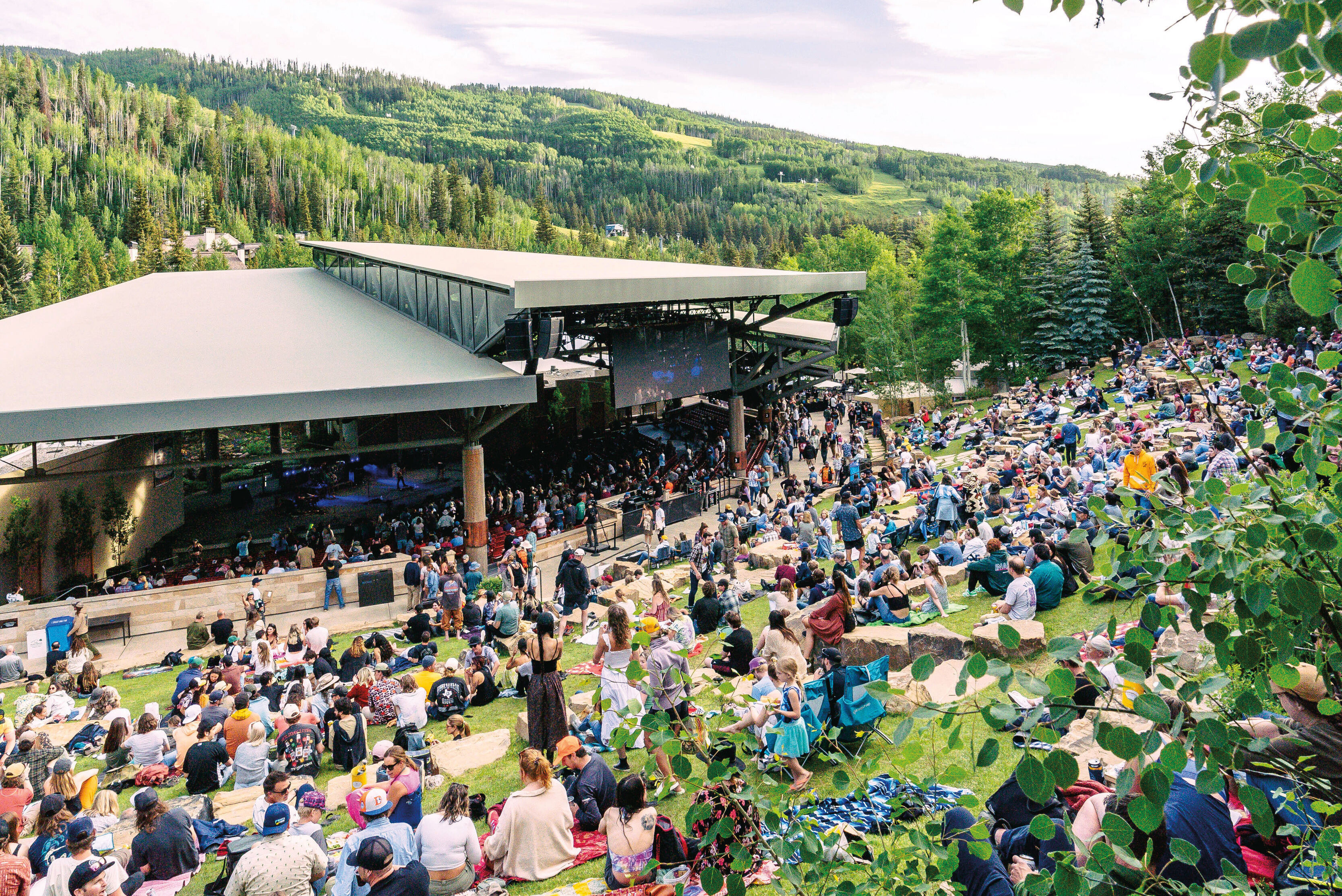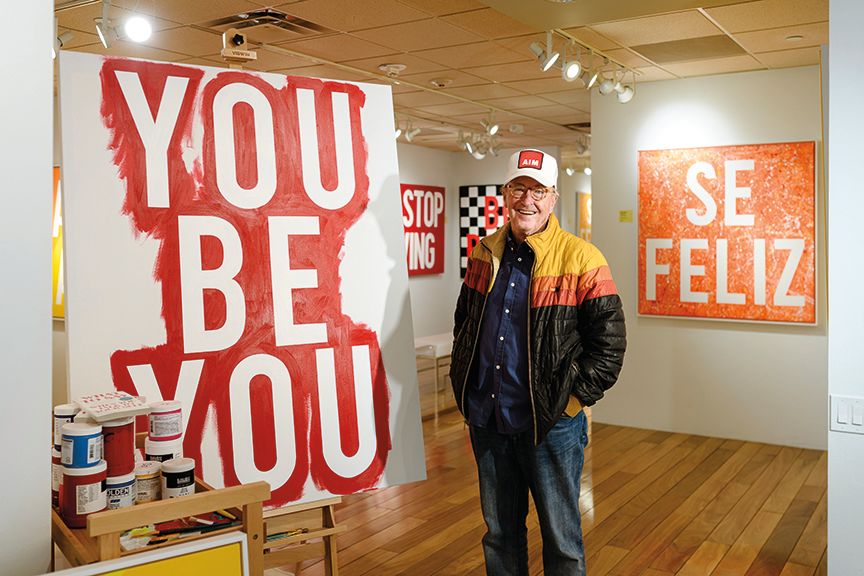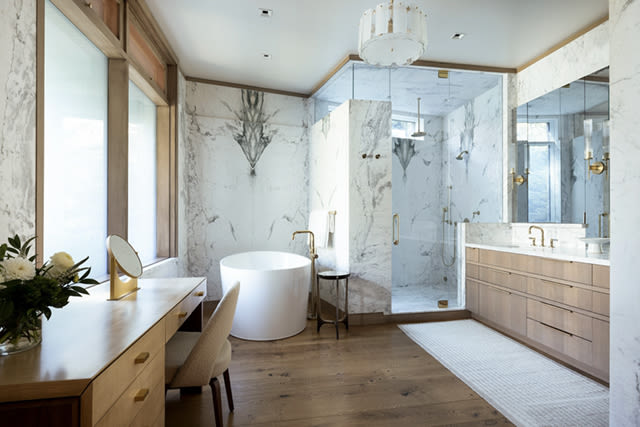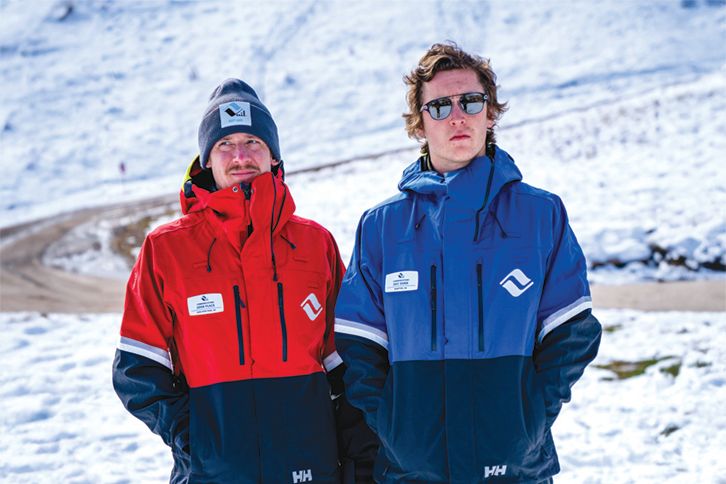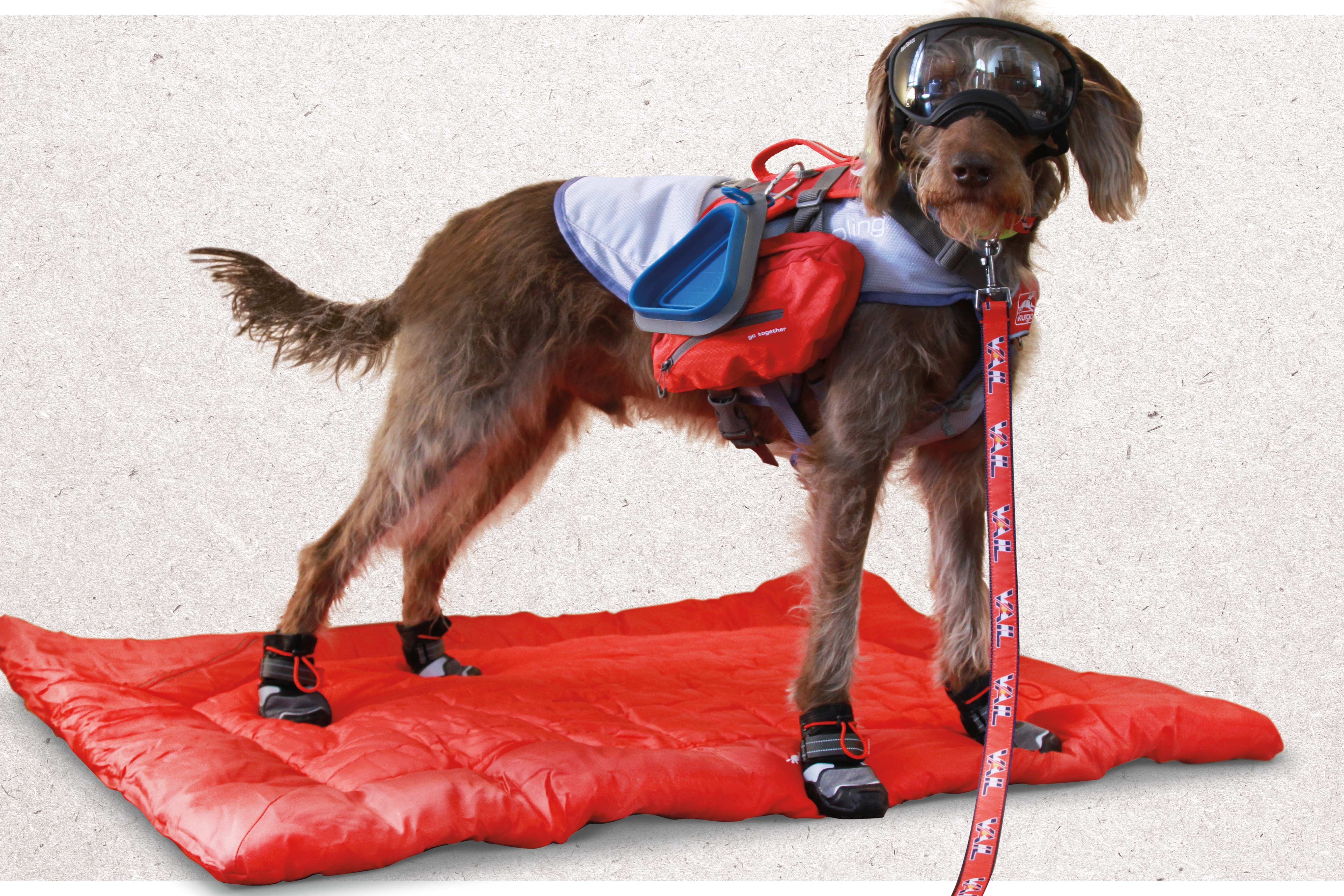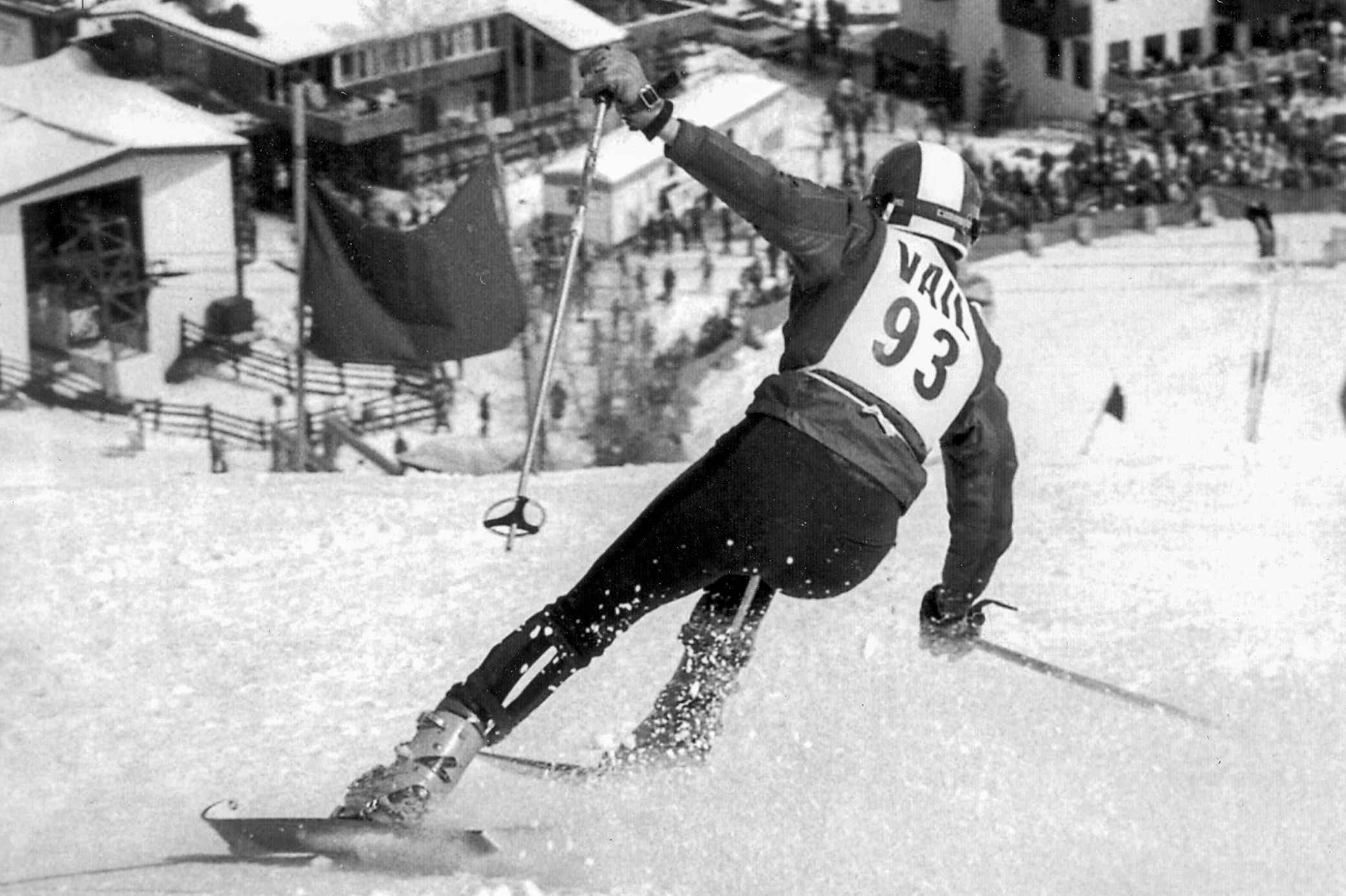
Inherit the Mountain
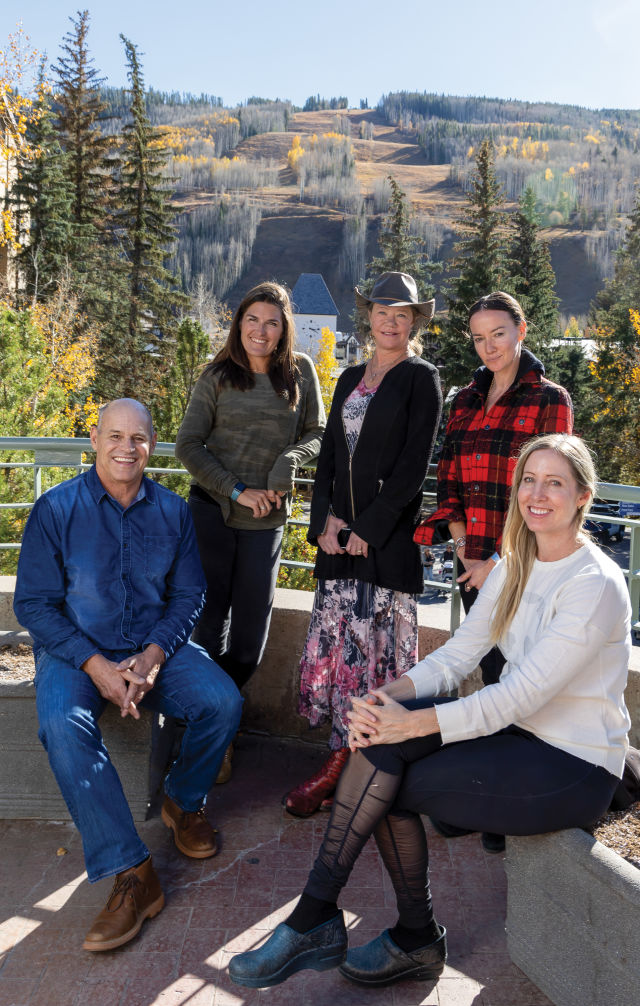
Clockwise from left: Pete Seibert Jr., Dominique Underhill, Kira Cameron, Ramsey Cotter, Simone Larese
Image: by Dominique Taylor
Few ski resorts in the world are more famous than Vail. Founded in 1962, the massive, romantic, powder-choked mountain with otherworldly views high above a built-from-the-ground-up Bavarian village celebrates its 60th anniversary this winter. The occasion comes with requisite fanfare—Vail is planning several anniversary events throughout the season—and, of course, requisite nostalgia among locals who have watched and participated in its evolution. To get a taste of what was, has been, and still is Vail’s cultural heartbeat, we interviewed sons and daughters of those who planted early roots around a nascent ski resort and helped turn it into a global destination. From a co-founder’s eldest son to local business owners carrying on their parents’ legacies, take it from them: much has changed, yes, but it’s still a magical and magnificent place—and mountain—to call home.
Sheika Gramshammer Jr. and Kira Cameron
The Gasthof Gramshammer hotel and restaurant, perhaps the most iconic business in Vail Village, opened in 1964 at the top of Bridge Street and has been a family-run institution for 58 years. Austrians Pepi and Sheika Gramshammer (he a famous ski racer, she a former model) put their daughters, Kira and Sheika Jr., to work early on. The sisters, five years apart, have been fixtures there ever since—and have no interest in doing anything else.
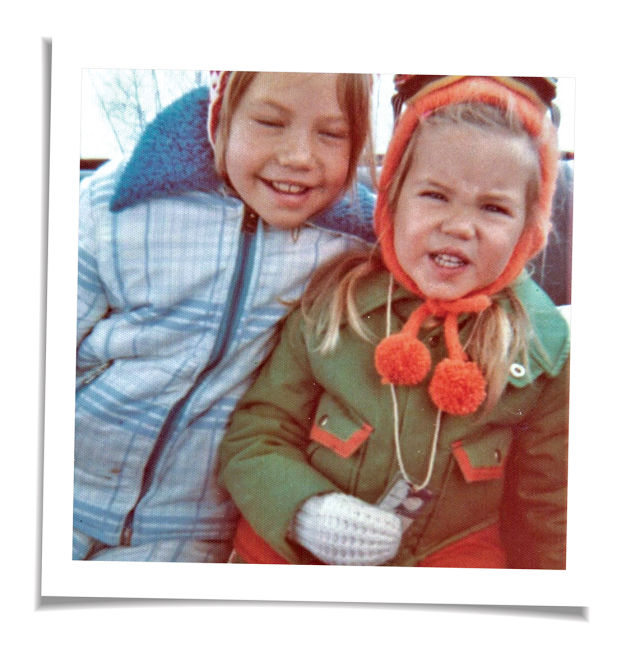
Kira Cameron and Sheika Gramshammer Jr.
Image: Courtesy Kira Cameron
Kira: I remember people skiing down Bridge Street to the door of the hotel before they heated the street. But it was funny because it was a little bit of a cluster. Some people didn’t know how to ski, so you had to dodge them.
Sheika Jr.: Dad would take me up skiing in a backpack. Apparently, I would hit him on the back of the shoulder and say, “Faster, Daddy, faster!”
Kira: When I was 10, my life changed with skiing. It was because of my dad. He made it fun. He always told me, “You’ve got to be looosey gooosey in the powder.”
Sheika: I started with Ski Club Vail when I was five and raced through college. Then I worked on Vail Patrol for two years. Now I telemark. I started that because the mountain was getting a little small; it made it big and fun again.
Kira: My dad’s name is on our building, and that’s super important to me. I would love to continue his legacy because he was invited to Vail and was one of the first people here. We have been blessed with everything he got to accomplish. And I appreciate it all. It’s neat for my sons, Kreek and Tirin, to grow up and be part of it too. That’s special to me.
Sheika: I’ve lived in different places, and I love Vail. It’s getting a little overwhelmed right now, but the charm of Vail and the people who live here—[that’s all still] here. It’s our home. Kira and I don’t want to see [the property] fall into someone else’s hands. We’ll make sure that this place stays alive and beautiful and iconic the way it is, and keep the memory and the names alive.
Erik Brofos
You won’t find a more devoted Vail Mountain skier than Erik Brofos, who moved to town in 1965 when his parents left New Hampshire to manage Vail Blanche Ski Shop. Brofos went on to coach many of the valley’s junior racers and still teaches skiing in his 60s—a position he’s held for more than four decades—when he’s not busy caretaking tony homes on Beaver Dam Road.
I was not born in Vail. Everybody seems to think I was, but I got here when I was seven. My dad’s Norwegian, and he and my mom fell in love with the valley and what Vail was going to do.
I went to Vail Country Day School in the early days, which later became Vail Mountain School. I was in the first graduating class in 1976; we had four people. One other is still here: Vali Pulis.
You have to imagine Vail without Golden Peak, without Lionshead, no Sandstone, no I-70, barely anything in East Vail. No West Vail or shopping centers. We had to go to Minturn to get groceries. And the bank was down in Eagle.
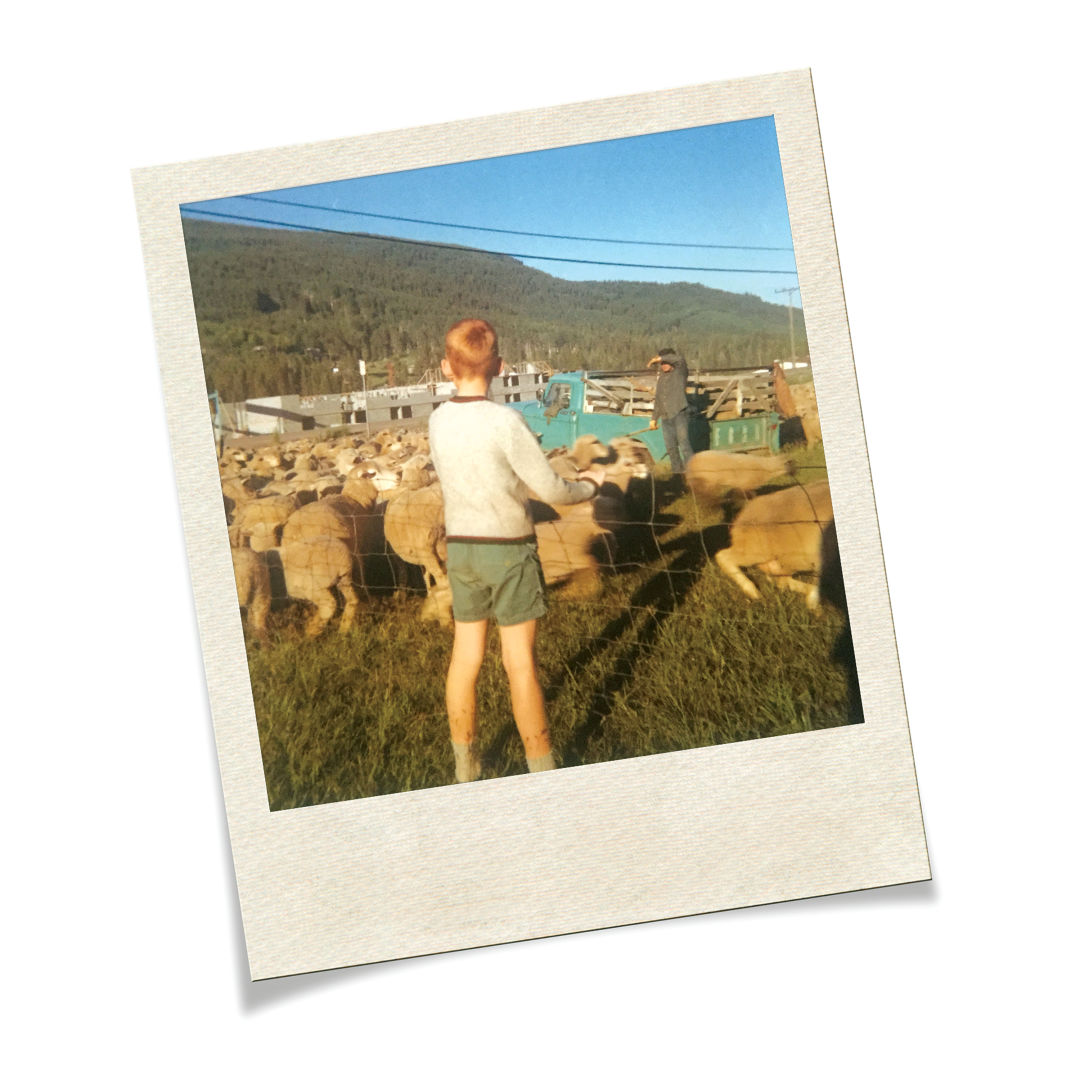
Erik Brofos in the late 1960s in Vail Village, near the site of the present-day Four Seasons at 1 Main Vail Rd
Image: Courtesy Erik Brofos
It was a small community that took care of each other. There was never a Thanksgiving at my house when I knew everybody at the table. Before we ate, my mom would make me and a buddy drive around and deliver meals to people who had to work Thanksgiving night.
Once Vail got discovered in the ’70s, lift lines were 45 minutes long, but we didn’t have enough skiers to cover all the acreage. It was understood that if you were coming off Chair 3 skiing out to Ricky’s Ridge, you’d go till the track in front of you until you turned left to go down. Over the course of several days, you could watch the progression of tracks in unbroken powder. It took a long time to ski out the bowls. I wish it were like that now.
Sometimes I hear people complain about the snow, but it’s like, man, you have no idea. When we had our big drought in the late ’70s or early ’80s, we didn’t have snowmaking. I was teaching skiing, and we would take rolls of plastic into the trees to make a chute, and we’d shovel snow onto lower Bear Tree so we could have a 30-foot-wide ribbon down to the base. Other times we’d skim down wet straw as fast as we could. I think we’re doing pretty well, given what the climate’s been doing.
Simone Larese
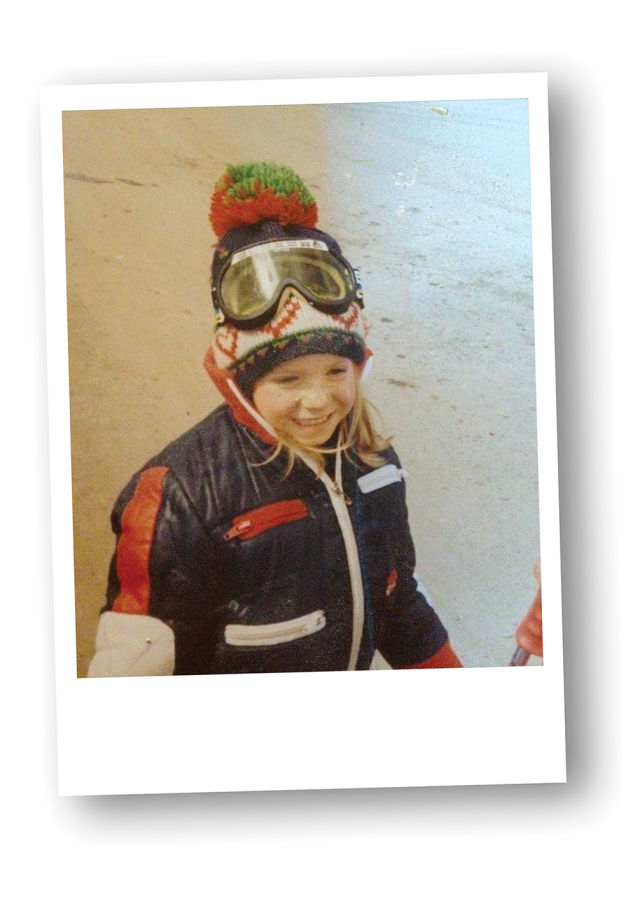
Simone Larese as a Ski Club Vail kid in the early 1980s
Image: Courtesy Simone Larese
Before coming home to continue her parents’ legacy as purveyors of the locally famous Swiss Hot Dog, Vail native and former US Ski Team racer Simone Larese traveled the world. Now the owner of Blü Cow at the top of Bridge Street, she still makes time to revisit her snow-caked childhood haunts as often as she can.
I grew up in Matterhorn Circle. It was all very modest back then. Most people were immigrants and everyone was extremely hard working, including my parents. My mom was from Australia, and my dad was born in northern Italy but raised in Austria. After a tough childhood, he joined the French Foreign Legion. He was fighting in Morocco in his late teens.
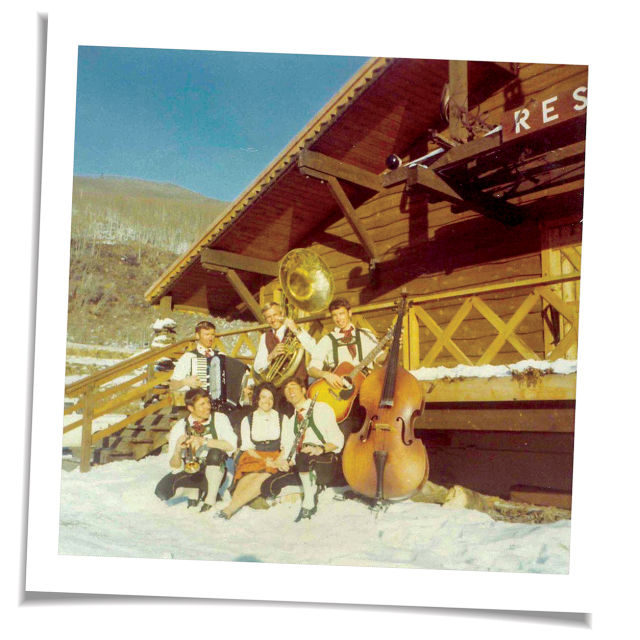
The original Blue Cow's house Austrian oompah band, circa 1969
Image: Courtesy Simone Larese
He and my uncle Ludwig built the first Blue Cow after my mom came up with the idea. They couldn’t get a liquor license for a year because the townhomes across the river were complaining that the oompah music would be too loud.
We were all ski racers, but we weren’t rich kids. We worked in our parents’ restaurants. A lot of the Ski Club Vail coaches were waiters at our restaurants too.
I still feel the magic of Vail when I ski. My place is nuts during the winter, but I try to get at least 20 days. I’ll always love skiing. And I know every run like the back of my hand.
Sacha Gros and Dominique Underhill
If you visited Joel and Jane Gros’s Vail Village ski shop from the late ’70s (when it opened as Colorado Ski Service) through the ’90s (as Vista Bahn Ski Rentals, its current name), chances are you witnessed their ski-crazed kids, Sacha and Dominique, running amok. Sacha went on to become an Olympic giant slalom racer, and both siblings settled in Alaska. But 11 years ago, their parents asked them to take over the shop, and it didn’t take long for them to commit to life back in Vail. Now they leave the running amok to their children.
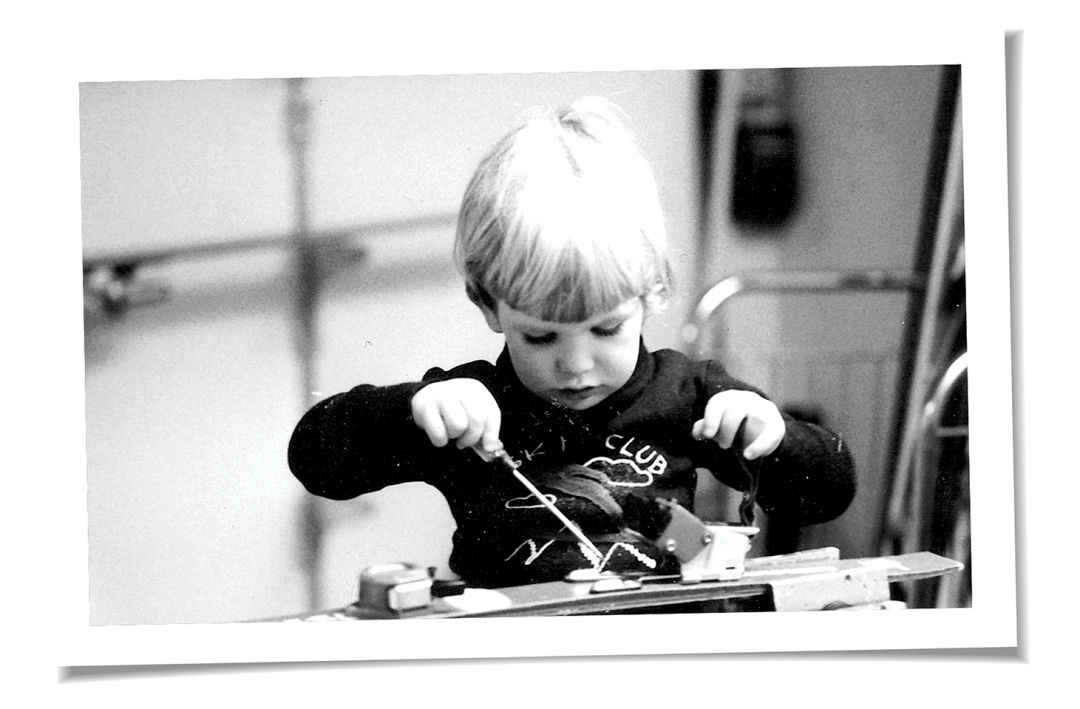
Sacha at work/play in the family's ski shop in 1976.
Image: Courtesy Sacha Gros
Sacha: I pretty much lived in the shop growing up. I remember skiing all around the mountain by myself at 6 years old. If somebody saw me somewhere, they’d call down to the shop and tell my parents, “Hey, I just saw Sacha here!” A lot is different now, but the mountain is still the heart of Vail. It bridges the gap between eras and keeps everybody together.
Dominique: It was honestly always my dream to come back and run the business. As soon as my parents wanted to retire, I was all in. I’ve wanted to keep the legacy going. My parents put their heart and soul into this thing. They’ll tell us that too: They worked way harder than we work now [laughs].
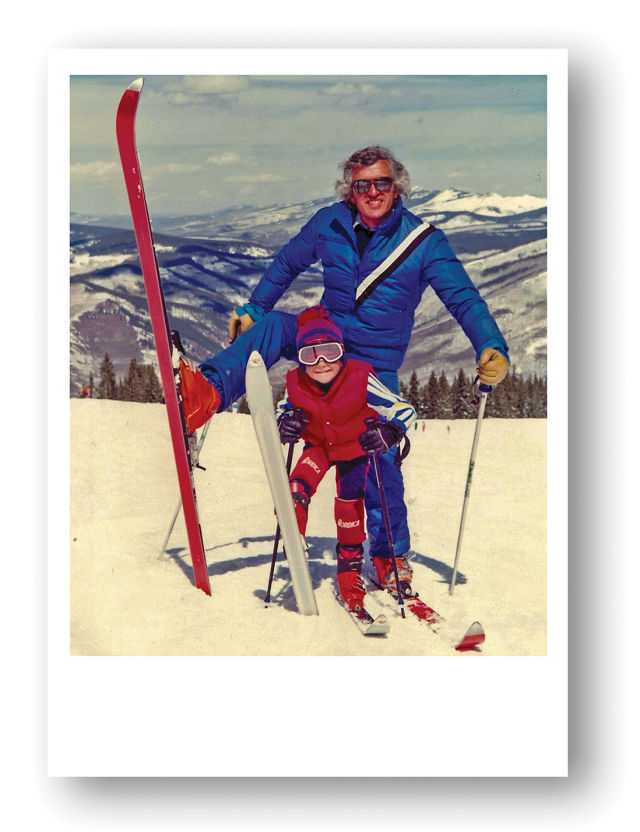
Sacha Gros earning his ski racer legs on Golden Peak in the late l970s
Image: Courtesy Sacha Gros
Sacha: It’s super important that Vail keeps locally owned shops. That’s where customers can talk to people and ask questions; it’s the blood of the town. Vail Resorts does its thing. They know what they’re doing, they’re making a ton of money, and we need the types of shops that they offer. But we also need places where people can get more of a personal touch.
Dominique: Last year we went to the Vail Cup, since our kids are ski racing now. We saw people who we grew up with and their kids, but also the grandparents were all chatting together because they raised us in the ski-racing world. It was just a really cool thing, and reassuring to see that’s still there. We still have it.
Sacha: Vail isn’t as quaint anymore. It’s a little more standard issue. I’ve skied all around the world, and yeah, there are better ski resorts and steeper runs, but the snow conditions at Vail and the grooming are hard to beat, and it’s very consistent. I think Vail is still special, I just hope we can get the heartbeat back a little bit.
Michael Slevin
Third-generation Vail resident Michael Slevin was born in Southern California, but he has no recollection of his birthplace. His parents moved back to Vail in 1975 when he was six months old. When he turned 21, he started working for his father’s real estate brokerage (formerly Gore Range Properties, now Berkshire Hathaway Home Services Colorado) and acquired the business in 2013 and serves as the firm’s president.
My grandparents were the first couple to be married in Vail after the resort opened. They met here, fell in love, and got married in 1964. My grandfather opened the first bar, called La Cave, the downstairs of which is now Vendetta’s.
Eagle was a long-distance phone call when I was young, and I’d get in trouble for calling my friends. One of the best things that’s happened with growth is it’s brought the valley together. That’s been very healthy for the kids. It’s expanded their social circles.
I know it can be a polarizing topic, but I think as skiing has become more popular and the markets broader, Vail Resorts has been positive for us in terms of keeping up with other resorts and making sure that we’re competitive. I don’t know that a family resort would have been able to create a four-season destination.
I’m one of the few who doesn’t ski much anymore. It’s funny, my father was born in Argentina and grew up in South and Central America. He moved to the US when he was 17, but he was here to work and raise a family. I grew up skiing just about every day, but now I’m working and the kids are playing. I don’t ski but a few days a year.
Ramsey Cotter
As the daughter of artist and jeweler Jim Cotter, Ramsey Cotter grew up listening to her dad tell stories about the 13 summers he hosted luminaries of the art world—from Dale Chihuly to Jean-Claude and Christo—when they came to town for the Summervail Art Workshop, a festival her father co-founded in 1971. She, like most sons and daughters of Vail, left the valley before returning to run the J. Cotter Gallery, which has occupied the same space on Wall Street for 53 years and has been her second home.
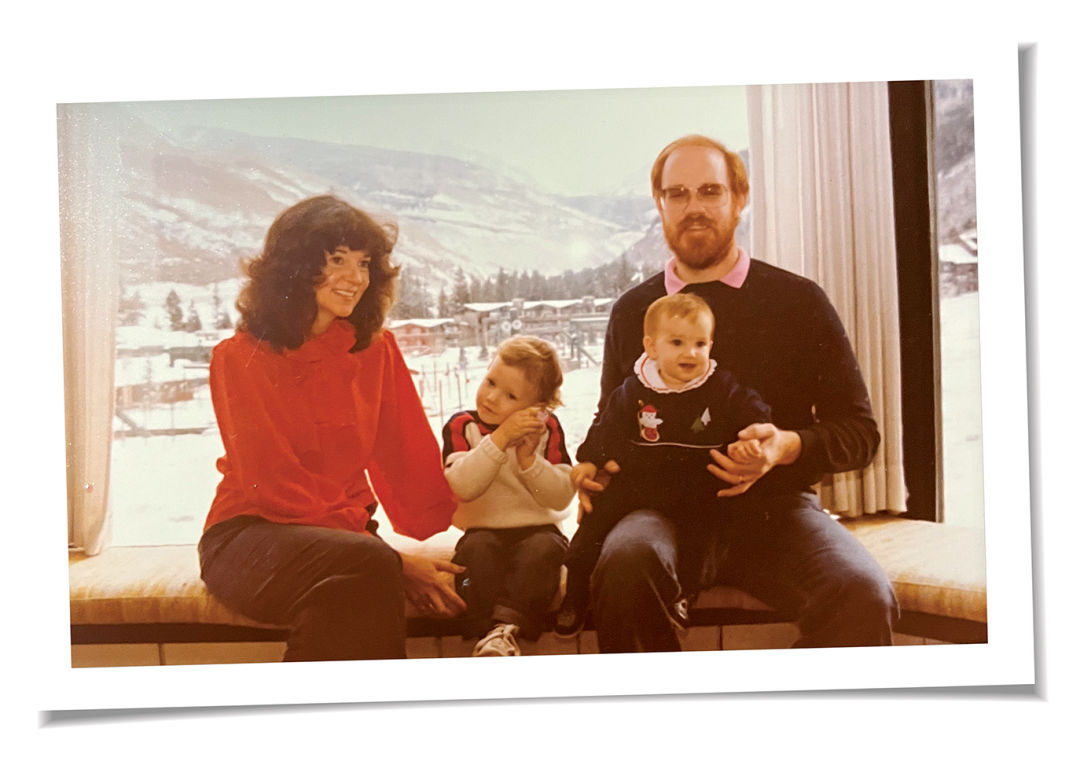
Gay, Riley, Ramsey, and Jim Cotter at Golden Peak, 1982
Image: Courtesy Ramsey Cotter
My dad always stressed how important it was to be able to wine with winos and dine with presidents. Because we would have dinner with President Ford, but also the local party animal, and you didn’t know the difference between them.
We certainly had a lot of free rein as kids. I used to go around to different stores in town and put things on my parents’ “tab,” because I thought that was a thing. Most people let me get away with it, which is really cute. In ski school, I’d say I was going to use the restroom, and then I’d ditch until the very end of the day when I’d meet up with everyone again. But no one sent a search party, no one worried back then; it was a much smaller community.
And a wild one! I remember hearing about my dad and Packy Walker hijacking one of the town buses and taking it for a joyride and serving everyone margaritas but not getting in trouble because everyone knew the police back then.
It’s not easy to be a family business in this town, where you feel like every other store is a T-shirt or sports shop. What keeps us from renting out our gallery space for some sort of astronomical passive income is an appreciation for small businesses and things that bring character. Like my dad says, big-box stores come and go, but these small mom and pops, once you lose them, they’re gone.
Pete Seibert Jr.
When Vail co-founder Pete Seibert and his family moved to Vail in the fall of 1962, shortly before the inaugural season began, his oldest of three sons, Pete Jr., was seven. Seibert, a 10th Mountain Division veteran who was wounded in the Battle of Riva Ridge during World War II, and local rancher Earl Eaton had made their fabled climb up Vail Mountain in 1957, deciding to build the world’s best ski resort in the sleepy valley below. Some of their children went on to forge careers in the ski industry too, including Pete Jr., who worked at Vail, Sun Valley, and Snowbasin. As a Slifer Smith & Frampton real estate broker and Vail town council member, he still manages to ski more than 100 days a year.
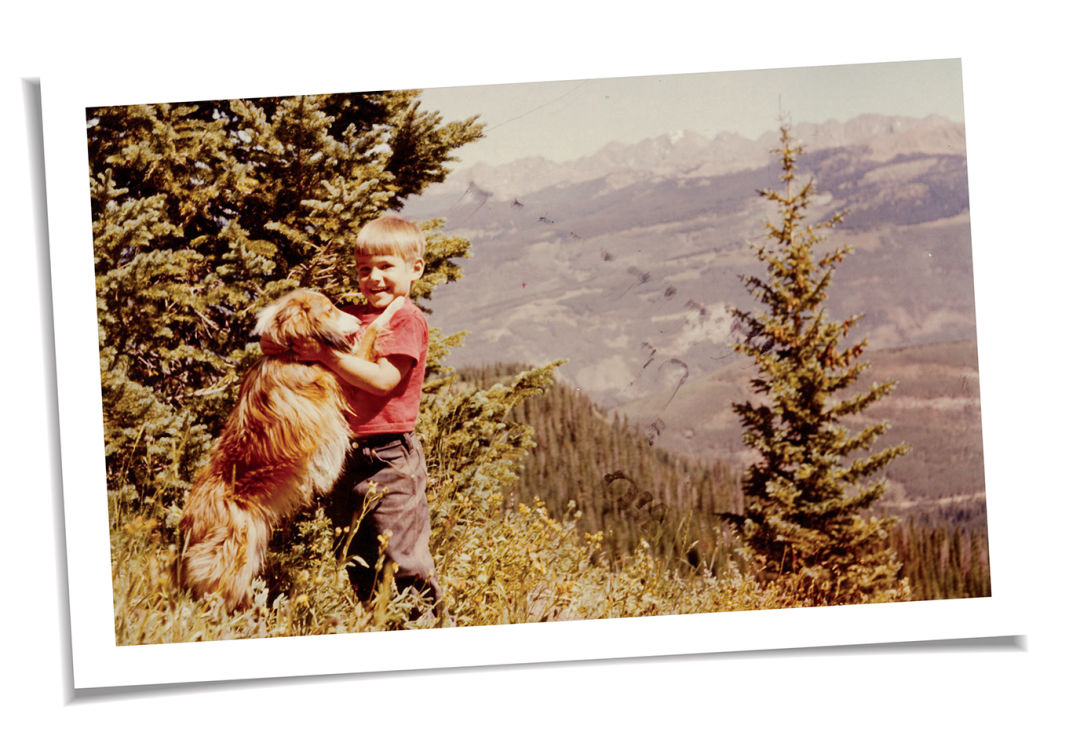
Pete Seibert Jr. on Vail Mountain, 1960
Image: Courtesy Pete Seibert Jr.
My earliest memory is coming to stay with Earl on Sandstone Road below the lumber mill in 1961. I woke up one morning and looked out to the east from a barn, and there was just the two-lane highway, and maybe you could make out a couple of old ranch houses. There was nothing there.
I didn’t really understand what it meant to be the founder’s son. The first year, there were about eight kids in town—two others in my grade. We had a one-room schoolhouse and it happened to be in Lodge at Vail hotel rooms. Later it was in our basement.
I broke my leg skiing each of the first two seasons. The first time was on Gitalong catwalk. The second time was when Adios was frozen for a pro race. I was in the third grade, and by then our parents just kicked us out the door and let us go skiing. A couple of friends and I ducked the closure rope. There was a foot of new snow on top of this ice, and I made about three turns in the powder and fell and broke my leg. I couldn’t quite get up to scoot over to Pepi’s Face, so I had to sit there and watch my dad walk up from his office.
I raced until I was 16, then came back after college and joined Vail Ski Patrol for three years. Those old patrollers would do sweep in the backside from a hang glider, in uniform. They were amazing people. Having a chance to be around them was life-changing.
Despite the crowds now, 70 percent of the time I still think the mountain skis like a dream. The biggest change is the new lifts. Now I can run up for two or three hours and get the same amount of skiing it took all day to get.
I always say if you hike to the top of Ptarmigan Ridge, which is where Earl took Pete, and you look southeast over Sun Down Bowl to Blue Sky, it’s almost identical to what it looked like when those guys hiked there 65 years ago. As much as everything’s different on the front side and in the valley, that part sticks with you.







